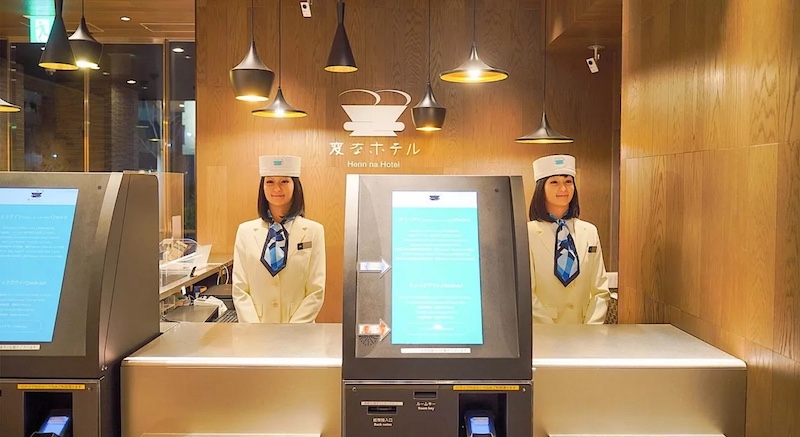Automation has become part of everyday life in many industries, and hospitality is no exception. Hotels, restaurants and resorts are experimenting with robots in both guest-facing and back-of-house roles.
From novelty bartenders to cleaning machines, the technology is slowly finding its place in an industry built on service and experience.
The market context
The global hotel industry is estimated at more than $400 billion annually, employing tens of millions of people worldwide. In the United States alone, the American Hotel & Lodging Association says hotels employ around 2.3 million people.
In tourist regions, hotels are often among the largest employers, yet many operators report persistent difficulties in hiring and retaining staff. Smaller businesses, such as family-run bed and breakfasts, also face rising wage and maintenance costs.
Against this backdrop, interest in robotic systems has grown, not only as a way to reduce costs but also to ensure reliable service when staff are in short supply.
Robots in guest-facing roles
Robots that interact directly with guests are often introduced as attractions in themselves. A well-known case is Japan’s Henn-na Hotel, which originally staffed its reception desks with dinosaur-shaped robots.
Although some of these machines were later phased out due to practical issues, the experiment demonstrated that robot concierges can generate publicity and curiosity.
Other hotels and bars have tested robot bartenders, capable of mixing drinks with precision, and delivery robots that bring items such as towels or snacks to guest rooms.
These robots are usually smaller, mobile units that can navigate hallways and operate lifts. Guest reactions vary: some enjoy the novelty, while others miss the personal interaction of traditional service.
Cleaning and service robots
While robot concierges attract attention, cleaning and logistics robots are often where automation delivers practical value. Autonomous cleaning machines, similar in principle to robotic vacuum cleaners but on a larger scale, can maintain lobbies and hallways.
Room service robots, equipped with secure compartments, are used to deliver food and amenities directly to guests.
In kitchens, robotic systems are beginning to assist with repetitive tasks such as frying, dishwashing and food preparation. These applications are less visible to guests but can improve efficiency in an industry where high staff turnover is common.
Why operators adopt robots
For hotel and restaurant operators, the main arguments in favor of robots are cost, reliability and hygiene. Modern hotel operations are complex, involving everything from catering and cleaning to logistics and security.
In many countries, particularly since the Covid-19 pandemic, operators have struggled to hire sufficient staff, especially for night shifts and cleaning roles. Robots can help fill these gaps.
Hygiene has also become a stronger selling point. Robots can deliver food or amenities without human contact, something that appeals to cautious travelers. Cleaning robots provide consistent performance, though they still require human supervision.
Guest experience: Added value or reduced service?
The central question is whether robots improve the guest experience. For some, the convenience of fast room deliveries or automated check-in is appealing. For others, hospitality is defined by human interaction, and the presence of machines may feel impersonal.
Studies of guest feedback suggest mixed views. Some guests are impressed by the novelty and efficiency of robot service. Others report frustration when machines fail to understand requests or move slowly compared with human staff.
The overall impression depends on whether the technology is used to complement, rather than replace, the human side of hospitality.
Challenges and limitations
Despite the publicity, robotic systems in hospitality are still relatively uncommon. Reliability is a major issue: hotels operate around the clock, and a malfunctioning robot can disrupt service. Maintenance costs can also be significant.
Cultural differences matter too. In some countries, guests may welcome robotic service as a symbol of modernity, while in others it may be seen as a cost-cutting measure at the expense of personal care. Smaller establishments, such as independent inns and B&Bs, often lack the resources or the need to adopt such technologies.
Privacy and data collection are also concerns. Some service robots use cameras or sensors to navigate and interact, raising questions about how guest information is stored and used.
Market outlook
Research groups forecast steady growth in the use of service robots in hospitality. Global Market Insights, for example, projects the service robotics market will exceed $50 billion by 2030, with hospitality making up a small but expanding share.
The technology is most common in large hotel chains and urban restaurants, where scale justifies investment.
The broader hotel market will continue to employ millions of people. For many tasks, especially those requiring empathy, judgment and cultural awareness, humans remain essential. However, robots are likely to become more common in defined roles such as cleaning, delivery, and basic concierge functions.
Hybrid hospitality
The likely future is a hybrid model in which robots handle repetitive or physically demanding jobs, while human staff focus on higher-value interactions. This approach could ease labor shortages while preserving the character of hospitality.
In practice, this might mean a guest checks in through an automated kiosk, receives room deliveries from a robot, but still enjoys dining service, travel advice and problem-solving from human staff.
For operators, the challenge will be finding the right balance, introducing automation without undermining the very experience that keeps guests coming back.
Real operational pressures
Robots in hospitality are no longer experimental curiosities, but neither are they universal fixtures. They are gradually being tested in settings where efficiency and novelty provide value. Hotels like Henn-na in Japan show how robots can capture attention, while cleaning and delivery robots address real operational pressures.
Whether this enhances the guest experience depends on expectations. For some travelers, automation adds convenience and novelty. For others, it removes the human touch that defines hospitality. The technology is advancing, but for now, it is more an addition to hospitality than a replacement for it.

